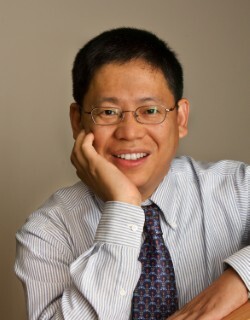September 18, 2024
3:00 pm
Venue
Maryland Hall 110
Title: Putting Chemistry to Work for Nano, Energy, and Medicine
Abstract: Nanomaterials have found widespread use in many applications, including photonics, electronics, catalysis, energy conversion, sensing, imaging, and medicine. Chemistry plays a central role in all these developments. For more than 25 years, we have been working diligently to develop chemical methods for synthesizing novel nanomaterials with well-controlled properties. In this talk, I will briefly discuss some of the recent developments, with a focus on the rational design and controlled synthesis of various types of nanomaterials for catalysis, fuel cell technology, drug delivery, and cancer theranostics. At the end, I will discuss how to scale up the synthesis of these nanomaterials without losing control to produce samples with the quality, quantity, and reproducibility needed for a systematic study of their fundamental properties as a function of size, shape, and internal structure, and for the exploration of translational/industrial applications.
Bio: Younan Xia is the Brock Family Chair and Georgia Research Alliance Eminent Scholar at the Georgia Institute of Technology. He received a B.S. degree in chemical physics from the University of Science and Technology of China (USTC) in 1987, a M.S. degree in inorganic chemistry from the University of Pennsylvania (with Professor Alan G. MacDiarmid) in 1993, and a Ph.D. degree in physical chemistry from Harvard University (with Professor George M. Whitesides) in 1996. He started as an Assistant Professor of Chemistry at the University of Washington (Seattle) in 1997 and was promoted to Associate Professor and Full Professor in 2002 and 2004, respectively. He joined the Department of Biomedical Engineering at Washington University in St. Louis in 2007 as the James M. McKelvey Professor and then moved to the current institution in 2012, holding joint appointments in the Wallace H. Coulter Department of Biomedical Engineering, School of Chemistry and Biochemistry, and School of Chemical and Biomolecular Engineering. His group invented numerous nanomaterials with controlled properties for applications in plasmonics, electronics, photonics, photovoltaics, display, catalysis, energy conversion, nanomedicine, and regenerative medicine. Notably, the silver nanowires invented by his group has been commercialized for the fabrication of flexible, transparent, and conductive coatings vital to applications in touchscreen display, flexible electronics, and photovoltaics. The gold nanocages invented by his group are enabling cancer theranostics. His work has greatly advanced the field of regenerative medicine by bringing multiple controls to the design and fabrication of scaffolds, including their composition, porosity, structural order, surface chemistry, mechanical properties, and capability to release growth factors. His technology on the alignment of electrospun nanofibers has been commercialized for multiple clinical products related to regenerative medicine, including those for the management of surgical and trauma wounds, along with pressure, diabetic, venous, and chronic vascular ulcers. He was named a Top 10 Chemist and Materials Scientist based on the number of citations per publication. He has received many prestigious awards, including the Linus Pauling Medal Award (2024), American Chemical Society (ACS) Award for Creative Invention (2023), Materials Research Society (MRS) Metal (2017), ACS Award in the Chemistry of Materials (2013), NIH Director’s Pioneer Award (2006), David and Lucile Packard Fellow in Science and Engineering (2000), Sloan Fellowship (2000), and NSF CAREER Award (2000). More information can be found here.
